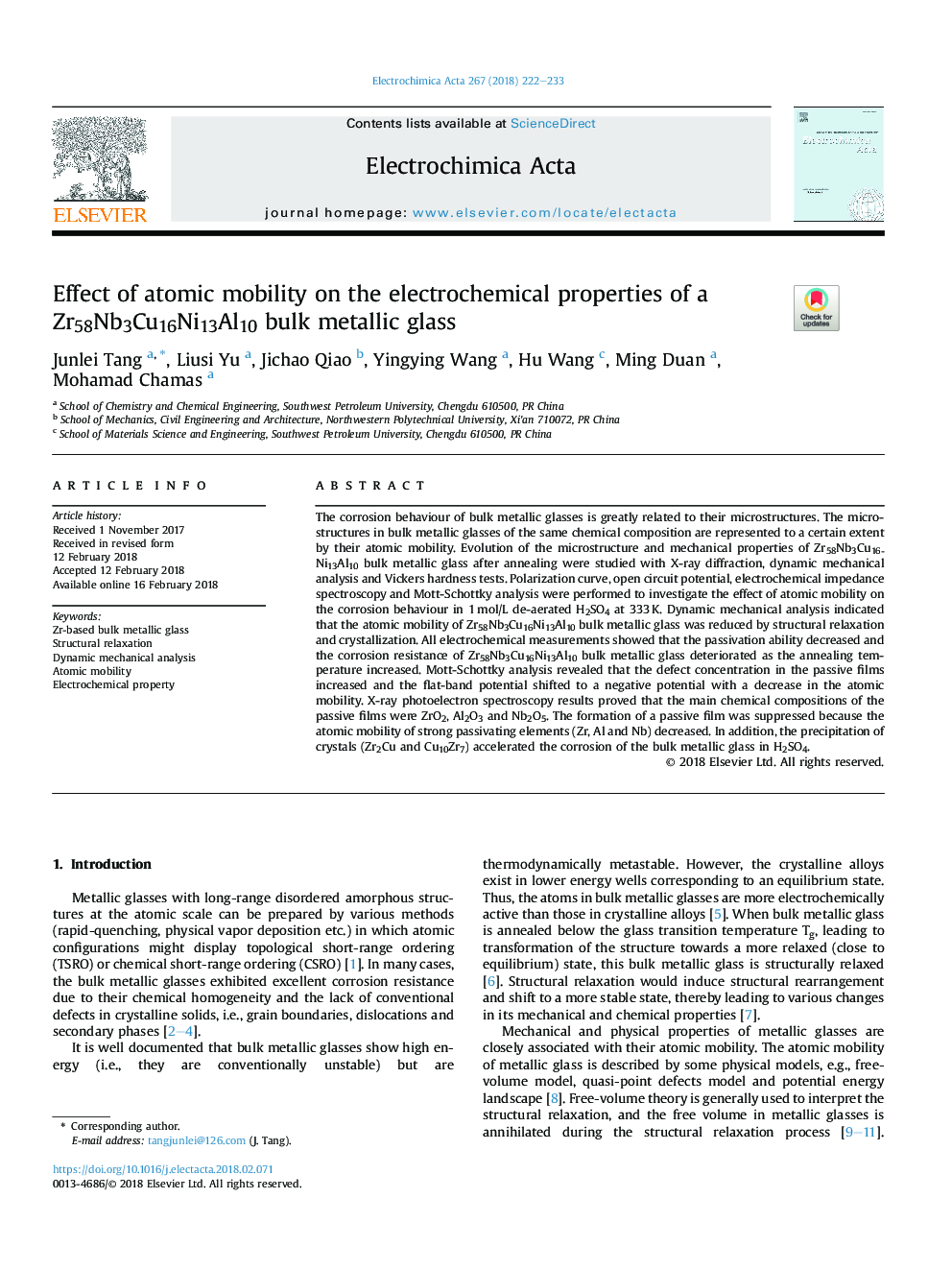| Article ID | Journal | Published Year | Pages | File Type |
|---|---|---|---|---|
| 6603930 | Electrochimica Acta | 2018 | 12 Pages |
Abstract
The corrosion behaviour of bulk metallic glasses is greatly related to their microstructures. The microstructures in bulk metallic glasses of the same chemical composition are represented to a certain extent by their atomic mobility. Evolution of the microstructure and mechanical properties of Zr58Nb3Cu16Ni13Al10 bulk metallic glass after annealing were studied with X-ray diffraction, dynamic mechanical analysis and Vickers hardness tests. Polarization curve, open circuit potential, electrochemical impedance spectroscopy and Mott-Schottky analysis were performed to investigate the effect of atomic mobility on the corrosion behaviour in 1â¯mol/L de-aerated H2SO4 at 333â¯K. Dynamic mechanical analysis indicated that the atomic mobility of Zr58Nb3Cu16Ni13Al10 bulk metallic glass was reduced by structural relaxation and crystallization. All electrochemical measurements showed that the passivation ability decreased and the corrosion resistance of Zr58Nb3Cu16Ni13Al10 bulk metallic glass deteriorated as the annealing temperature increased. Mott-Schottky analysis revealed that the defect concentration in the passive films increased and the flat-band potential shifted to a negative potential with a decrease in the atomic mobility. X-ray photoelectron spectroscopy results proved that the main chemical compositions of the passive films were ZrO2, Al2O3 and Nb2O5. The formation of a passive film was suppressed because the atomic mobility of strong passivating elements (Zr, Al and Nb) decreased. In addition, the precipitation of crystals (Zr2Cu and Cu10Zr7) accelerated the corrosion of the bulk metallic glass in H2SO4.
Keywords
Related Topics
Physical Sciences and Engineering
Chemical Engineering
Chemical Engineering (General)
Authors
Junlei Tang, Liusi Yu, Jichao Qiao, Yingying Wang, Hu Wang, Ming Duan, Mohamad Chamas,
